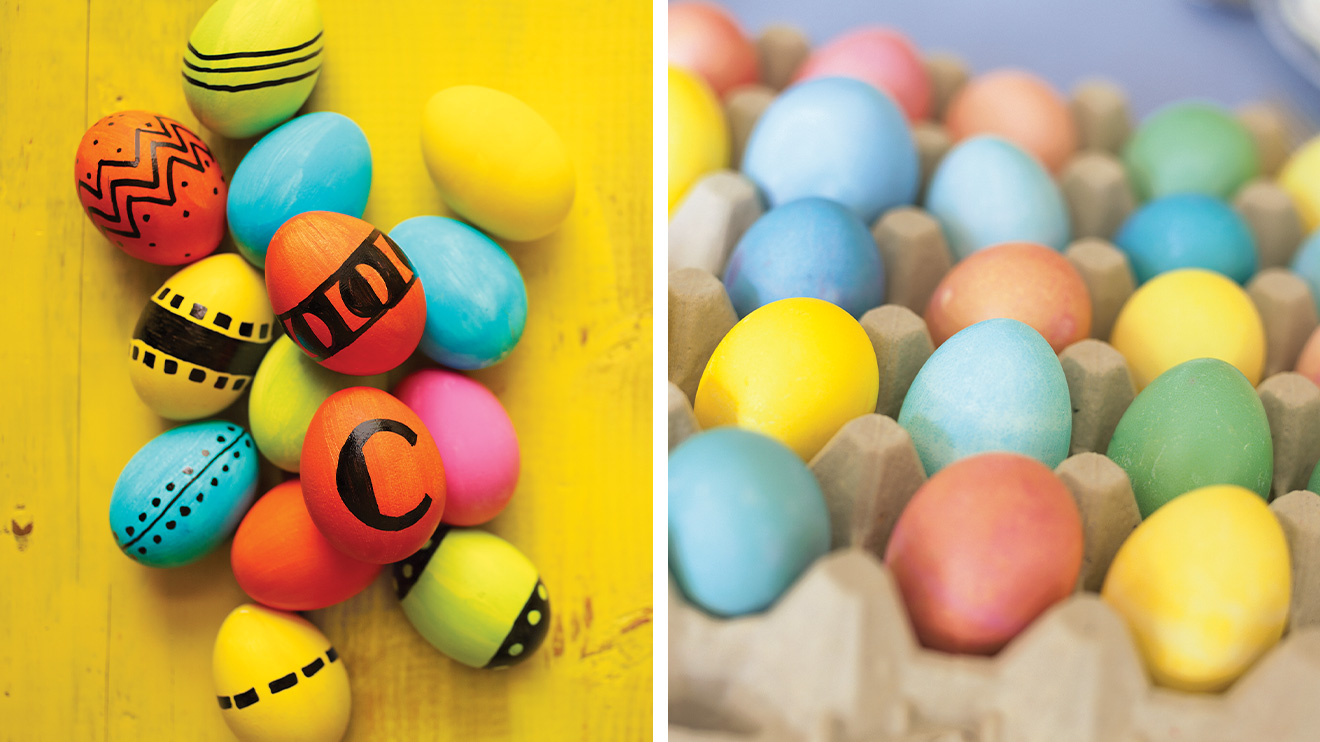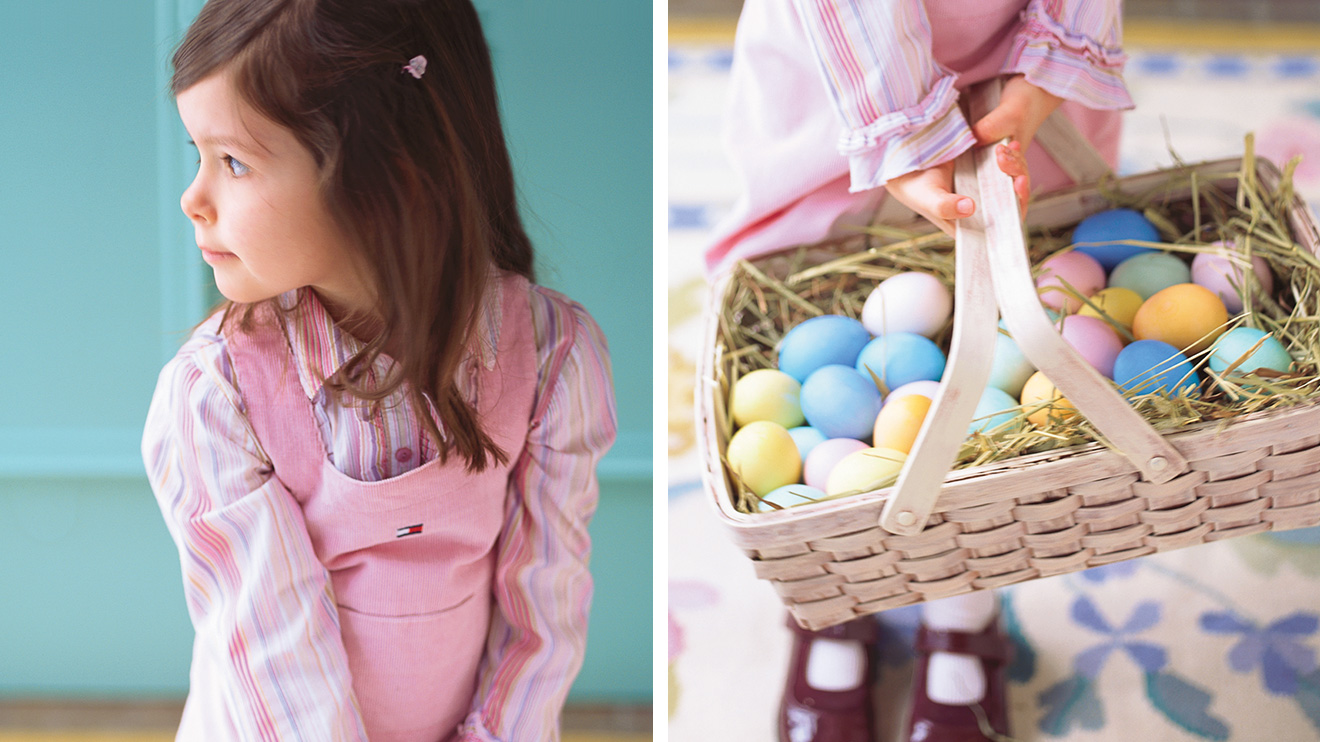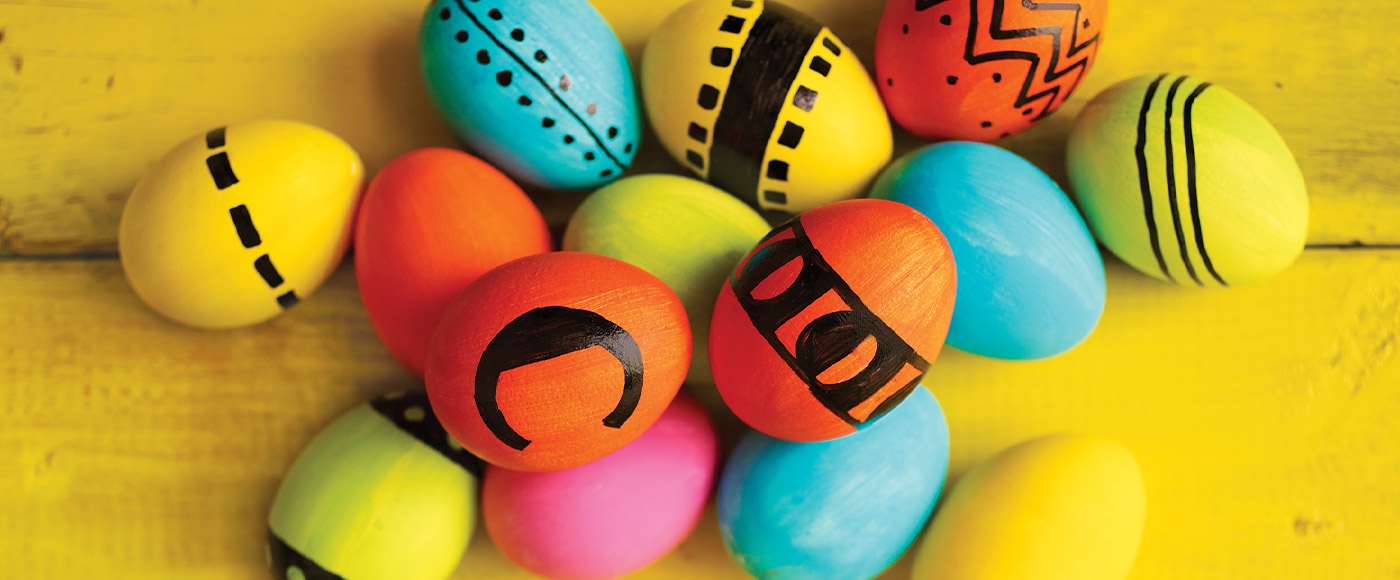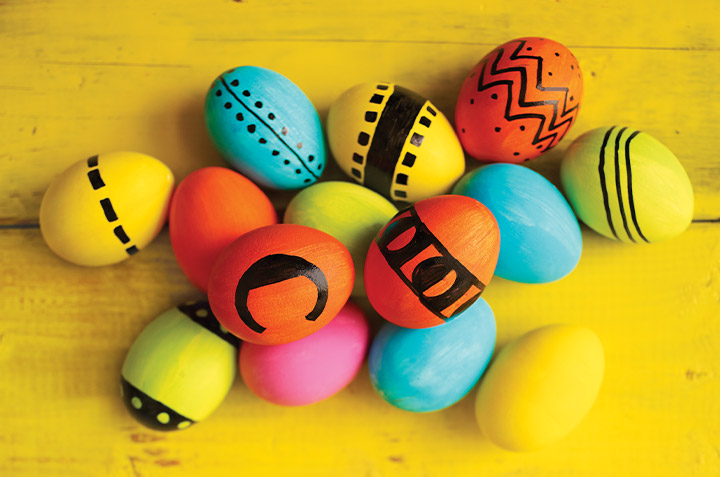I’ve always loved planning Easter egg hunts. With my three girls over the years, I’ve dyed eggs, drawn bunny prints on construction paper leading to the big prize, and come up with riddles to guide them towards the chocolates… So I am sharing with you my tips on organizing an Easter egg hunt based on your children’s ages, a great way to decorate eggs, as well as a recipe I’ve loved making with my children.
This year, given that you might not have all the materials readily available at home, it could be that the hunt won’t be Pinterest-worthy. But it’s all right; you’ll still have a wonderful time as a family.
– Brigitte
1. Decorating the eggs
These Easter eggs will look sharp with their bright colours and cool designs. Here are three steps to follow:
- Hollow out the eggs.
- Paint them with acrylic paint.
- Draw on the eggs using a black, oil-based Sharpie. This is an important detail; any other type of marker won’t adhere as well. Oil-based markers are sold in art supply stores.

Note that you can also paint your eggs with red cabbage cooking water or even food colouring.
2. Easter egg hunt
It’s on! On the lookout for new ideas for your annual Easter egg hunt, this year taking place in the house or in the backyard? Hints, games, hidden eggs… Depending on your child’s age, here are a few tips to try.

2 to 5 years old: for the younger kids
Pretty colours
The little ones don’t know how to read and won’t go searching for treats at the far ends of the backyard or basement. Opt for plastic eggs of the same colour for each child, and scatter them about. That way, it’ll be easier to make sure each child gets the same number of eggs.
Bunny paws
If you want to hide the eggs, you can give out hints by simulating the Easter bunny’s passage, which will lead the kids to the hidden treasures: bunny prints in the earth or cut out of construction paper, half-eaten carrots, etc. You can also hide cut-out photos from magazines in the plastic eggs, along with a piece of chocolate. The image will indicate where the next egg is hidden, e.g. a swing set.
6 to 10 years old: for the kids
Scavenger hunt
For children who know who to read, you can provide them with a hint to start, such as the place where the first egg is hidden. You can then stick a subsequent hint on each of the following eggs. If not, a grown-up can provide the hints to the children as they go. Try to vary the locations in the house, so as to not have all the children in one room at the same time. Some examples of hints? “You need to sing a song to the person born in 1967 to get your surprise” or “Go up 14 steps, walk forward 18 steps, look down and you’ll find a treat.”
Puzzles
To increase the level of difficulty, you can suggest a puzzle. On a large piece of paper, write out a message or draw a hint. Then cut up the paper into puzzle-shaped pieces, and hide each piece in an egg. Once all the eggs have been found, the kids can assemble the puzzle to find the big prize or surprise.
11 to 14 years old: for the older kids
In the dark
For an extra challenge or to switch things up, organize a hunt during sundown or when it’s night out. Provide each child with a flashlight or, if possible, a headlamp.
Word games
To work their minds a little bit, write a letter on each egg. Once all the eggs have been gathered, ask the kids to assemble a bunch of words with the letters. Give a special prize to the child who comes up with the most words, or to the one who comes up with a word using the most letters.
3. Cupcakes
I often made cupcakes with my three girls! To make a flower motif, it’s as easy as having large white marshmallows and miniature marshmallows of various colours. Success guaranteed!


